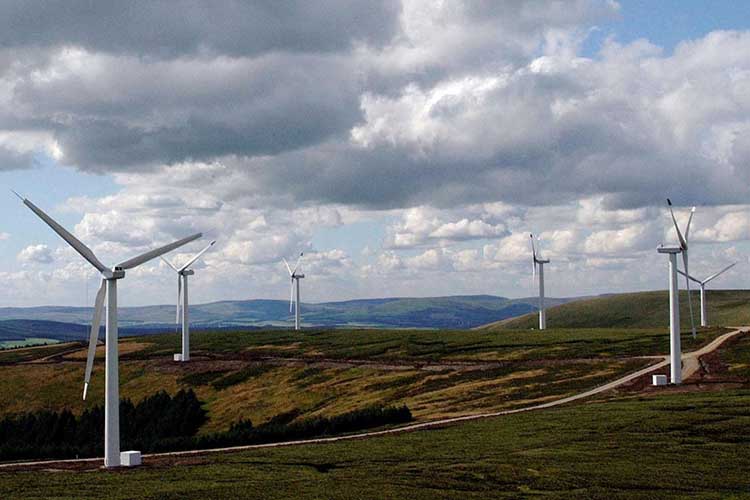
The first national volunteer survey of litter found by Scottish rivers and waterways has revealed that plastic bottles were the most littered item, followed by plastic pieces, plastic snack packets, drinks cans and polystyrene pieces.
With 80% of marine litter coming from land, environmental charity Keep Scotland Beautiful’s Upstream Battle® campaign focuses on raising awareness, gathering evidence and inspiring action to change littering behaviour to prevent marine litter at source along rivers in Scotland.
The recently published Upstream Battle® Citizen Science Report – a snapshot of data gathered by volunteers across a three-month period between December 2023 and February 2024 – consists of 185 surveys conducted along 26 rivers and waterways in 20 local authority areas across Scotland. It forms part of the national rollout of the campaign, aimed at understanding and addressing marine litter across the country.
In total 20,383 items were counted during the survey period, with the majority of litter found to be items which would be addressed under a Deposit Return Scheme (DRS) or effective Extended Producer Responsibility (EPR) regulations.
The rest of the top 10 items littered include cigarettes, glass fragments, dog poo, plastic bottle caps and plastic bags.
Barry Fisher, Chief Executive at Keep Scotland Beautiful, said: “On the back of an extremely successful Spring Clean, this report celebrates the efforts of many individuals and groups who took time out of their busy lives to carry out surveys and send data to us, providing us with much needed evidence of the range of items that are damaging our rivers and waterways.
“The data shows similarities across the country, but also highlights regional nuances – this report highlights the importance of understanding and addressing these issues at a national and local level.
“I’d like to thank everyone who supported this data drive, from our tireless volunteers to our partners and funders who have shared and echoed our message and vision.
“Scotland’s litter emergency is damaging our rivers. We need our governments to commit to tackling single-use packaging litter through improved Extended Producer Responsibility (EPR) regulations and to ensure a Deposit Return Scheme is not further delayed. These policy measures are needed now – litter levels will only get worse without them.”
Keep Scotland Beautiful’s Upstream Battle® campaign raises awareness of how litter from land travels from source to sea – becoming marine litter – and inspires people to take positive action.
Read the full report here or visit Upstream Battle | Keep Scotland Beautiful to learn more.
The top 10 littered items were: Plastic bottles (2,866); plastic pieces (2,490); snack packets (2,421); drinks cans (1,565); polystyrene pieces (1,507); cigarettes (1,185); glass fragments (850); dog poo (740), plastic bags (569); and plastic bottle caps (486).

Bowbeat Wind Fram, photo credit RWE.
A planning bid has been submitted to Scottish Borders Council to extend the lifespan of a “still commercially viable” windfarm near Innerleithen.
The application, prepared and submitted by RWE Renewables UK Operations Ltd, is to allow for Bowbeat Wind Farm at Bowbeat Hill to remain operational for an additional five years, until August 2030.
Bowbeat on the Moorfoot Hills is one of Scotland’s most powerful windfarms. Twenty-five year planning approval was granted in 2000 and the construction of Bowbeat was very challenging and took a year to complete.
Access to the site was made up of several kilometres of reinforced forest track to help the construction vehicles and cranes up the site’s steep slopes.
It was officially opened by former Energy Minister Brian Wilson in 2003. In 2015, the wind farm was generating enough energy to supply almost 16,000 homes
Original approval was for the development and operation of a windfarm comprising of 24 turbines with a blade tip height of 76m and a hub height of 46m, with a generating capacity of 31.2 Megawatts (MW).
A report with the application states: “In respect, Bowbeat Wind Farm has been operational for 20 years without any recorded incidents relating to major accidents and disaster, and human health impacts.
“Bowbeat Wind Farm would continue to be managed in accordance with RWE site management protocols, significantly reducing the risk of accidents.
“Site protocols and management plans will be updated in accordance with the relevant legislation, as required, and would remain in place through the extended operational life of Bowbeat Wind Farm.”

The River Esk runs through Musselburgh and is lined with trees.
An investigation has been launched after up to 12 trees were allegedly felled in Musselburgh to make way for a bin.
Scottish Forestry, the government body which oversees tree management, has confirmed it is looking into the removal of the trees, near the River Esk.
Unauthorised felling is a criminal offence and could result in a fine of up to £5,000 per tree chopped down being issued by the courts.
The investigation was revealed during a meeting of East Lothian Council’s cabinet this week where elected members were asked to approve a new Tree and Woodland Strategy for the local authority.
Councillor Shona McIntosh, local member for Musselburgh, told the meeting: “Just last week I had several complaints from constituent about someone who put in a planning application for some bins, hadn’t mentioned anything about tree removal and then anything between seven and 12 mature trees have been felled.”
Councillors were told the new strategy aimed to highlight the importance of trees and woodland with the public and make people more aware of the protections in place.
Their officer said: “Most trees need felling permission from Scottish Forestry who are investigating that particular case, but it is whether people are aware that that is the case.”
A Scottish Forestry spokesperson said: “We take all reports of alleged unauthorised fellings very seriously and will follow up based on the information given.
“In this case there have been no permissions given to fell these trees and therefore the action is now subject to a formal investigation. Our woodland officers will be visiting the site very soon as part of information gathering.
“Once we have completed our work we will determine next steps. We won’t be in a position to comment further until the investigation has run its course.”
Councillor Andy Forrest, fellow Musselburgh ward member, called for additional information to be made available to the public on where to report concerns about trees being felled.
He said: “The area where this happened has been totally changed and I think it could possibly have been stopped.”
The new Tree and Woodland Strategy covers ambitious plans to help East Lothian Council meeting its net carbon neutral targets and deliver a range of biodiversity, landscape, health and well being, and green network benefits .
Working along with communities, landowners and farmers it is hoped to create an East Lothian Climate Change Forest with proposals to plant two million trees by 2031 across the county, increase the urban tree canopy and expand its network of hedgerows.
The planting of two million trees will increase woodland cover by an area of around 1250 ha, around three times the size of John Muir Country Park.
The tree canopy cover target for the county is 30 per cent, which, the strategy reveals, is currently only met in Longniddry and Pencaitland.
Areas where the canopy cover is most behind the target include the new town of Blindwells, Wallyford and Macmerry which are just 10 per cent or lower.
Council leader Norman Hampshire praised the work of the officers in producing the new strategy and its importance to the future of the county.
He said: “We need to make sure we protect what we have. A tree is a climate regulator, it is not just the carbon it takes out from the atmosphere, it also reduces the water that is in the ground. It provides shade, reduces wind blow and provides shelter so having as many trees as we can helps our environment.”
The full Tree & Woodland Strategy can be downloaded from the East Lothian council website, see item 08 HERE.